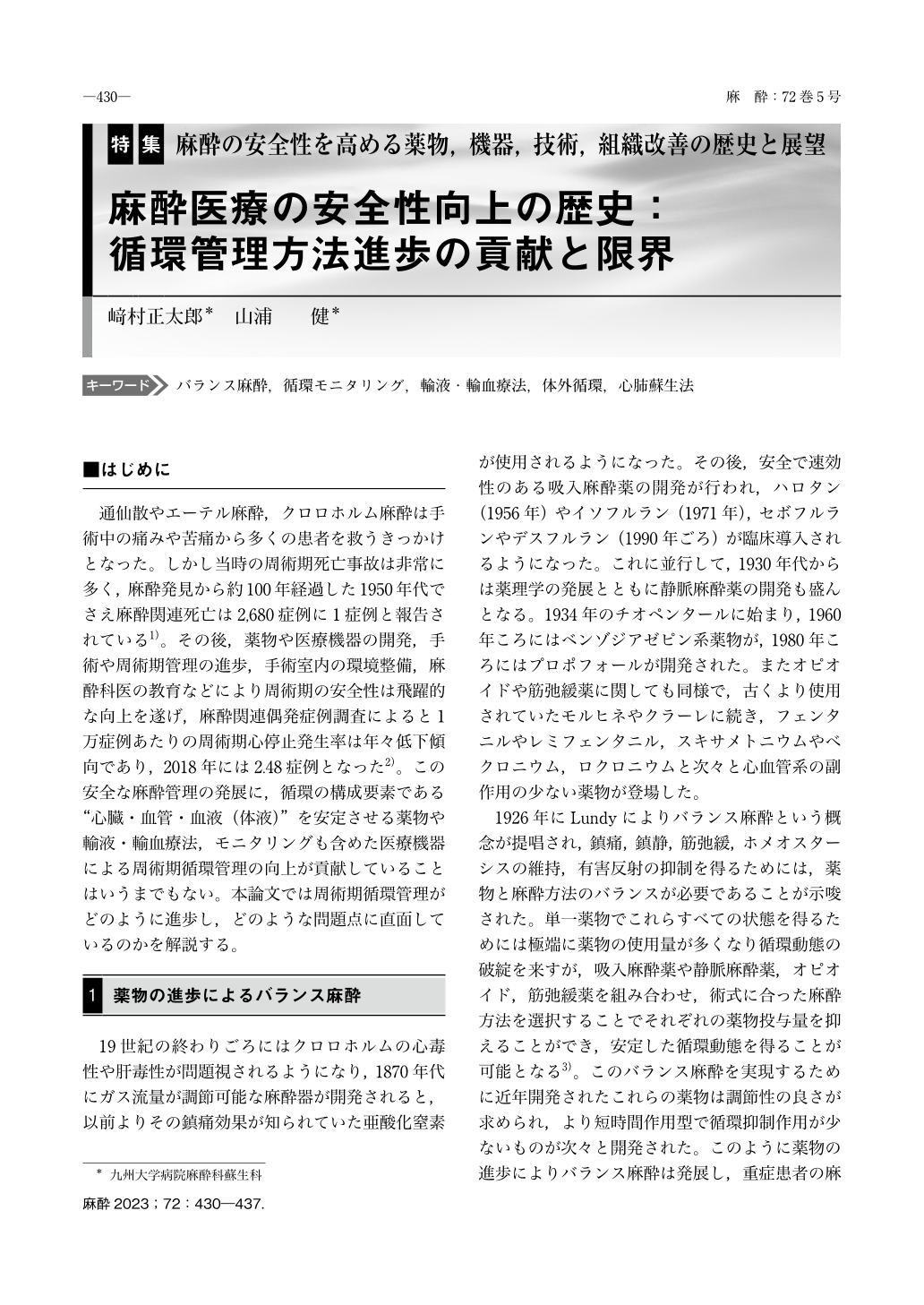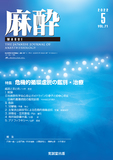Japanese
English
- 有料閲覧
- Abstract 文献概要
- 1ページ目 Look Inside
- 参考文献 Reference
はじめに
通仙散やエーテル麻酔,クロロホルム麻酔は手術中の痛みや苦痛から多くの患者を救うきっかけとなった。しかし当時の周術期死亡事故は非常に多く,麻酔発見から約100年経過した1950年代でさえ麻酔関連死亡は2,680症例に1症例と報告されている1)。その後,薬物や医療機器の開発,手術や周術期管理の進歩,手術室内の環境整備,麻酔科医の教育などにより周術期の安全性は飛躍的な向上を遂げ,麻酔関連偶発症例調査によると1万症例あたりの周術期心停止発生率は年々低下傾向であり,2018年には2.48症例となった2)。この安全な麻酔管理の発展に,循環の構成要素である “心臓・血管・血液(体液)” を安定させる薬物や輸液・輸血療法,モニタリングも含めた医療機器による周術期循環管理の向上が貢献していることはいうまでもない。本論文では周術期循環管理がどのように進歩し,どのような問題点に直面しているのかを解説する。
About 250 years have passed since it became possible to relieve pain during surgery. In the meantime, perioperative circulatory management including new anesthetic agents, fluid therapy and circulatory monitoring led to safer anesthestic care. However, although there have been remarkable advances in perioperative circulatory management methods, there are no anesthetic agents that do not suppress circulation or devices that are noninvasive and highly accurate. We hope that such drugs and devices will be developed in the future, and the most important thing for anesthesiologists is striving for safe and more appropriate perioperative circulatory management tailored to each patient.

Copyright © 2023 KOKUSEIDO CO., LTD. All Rights Reserved.


